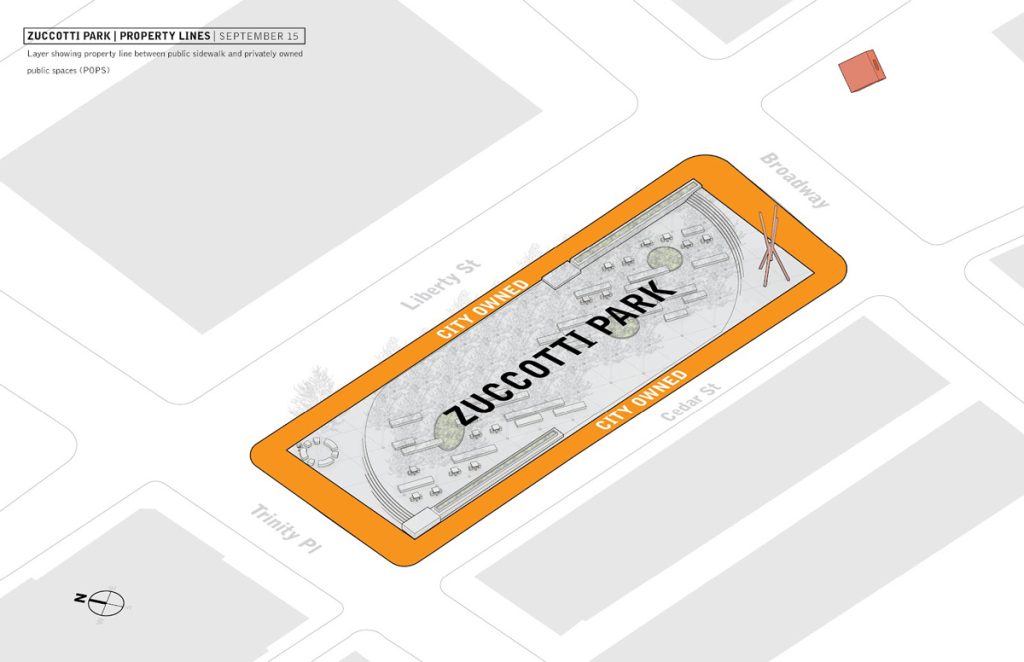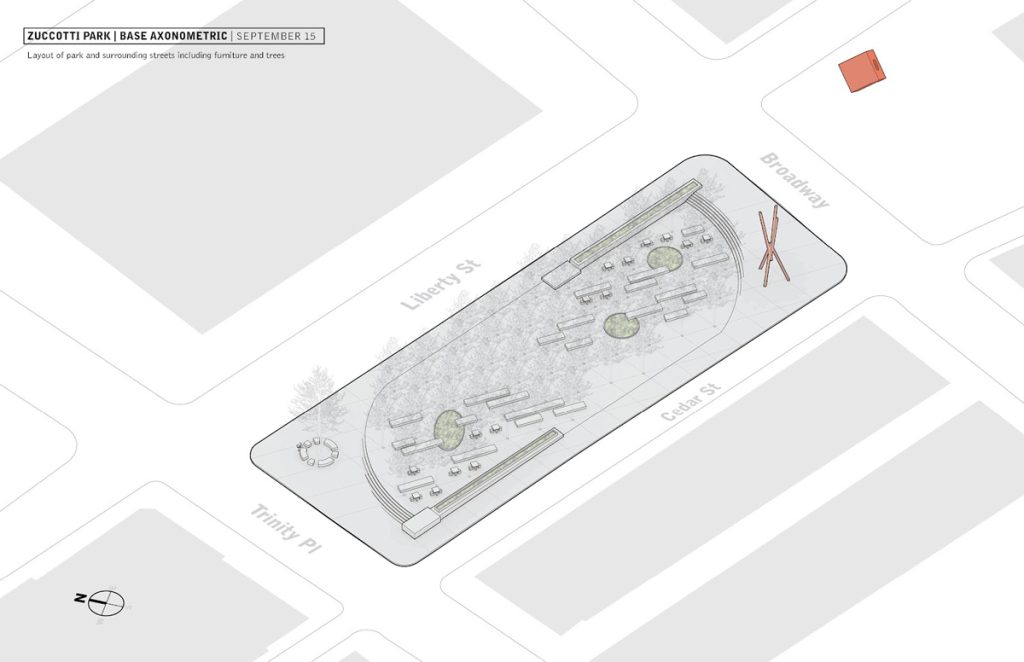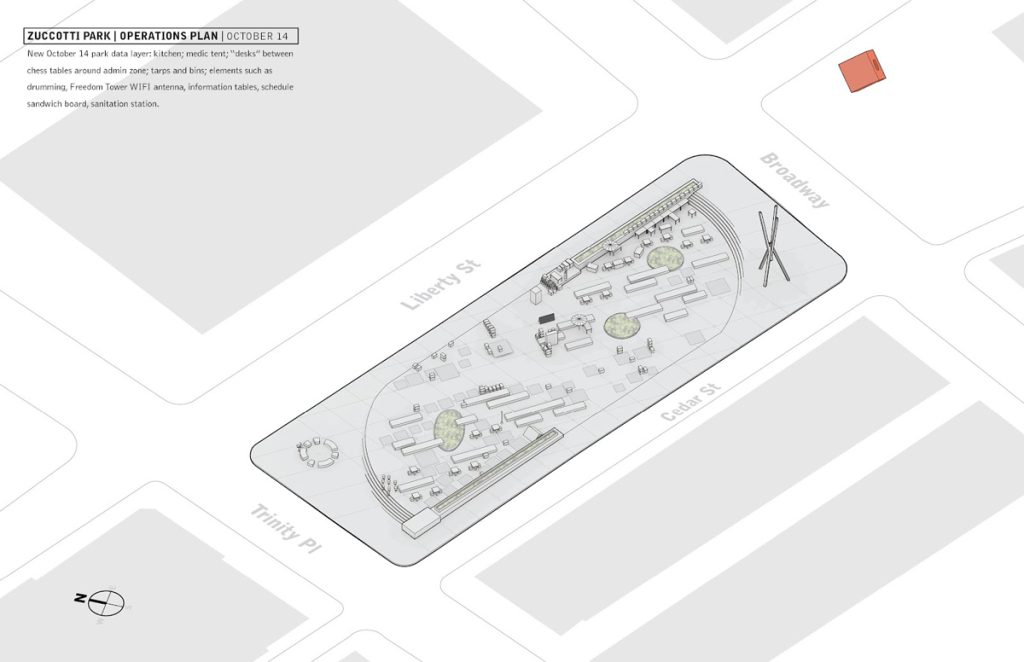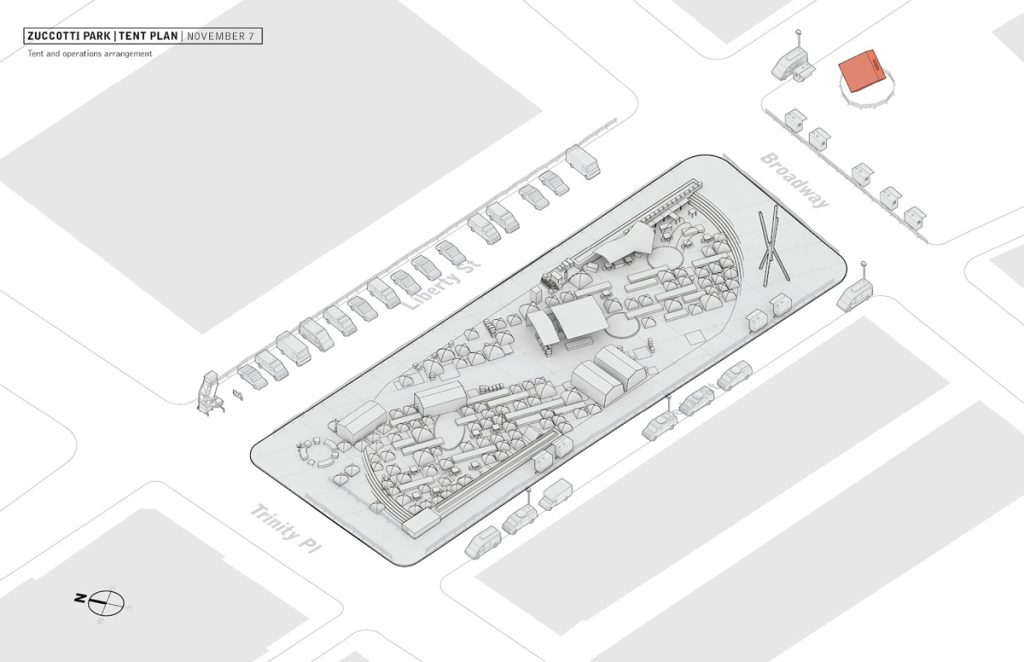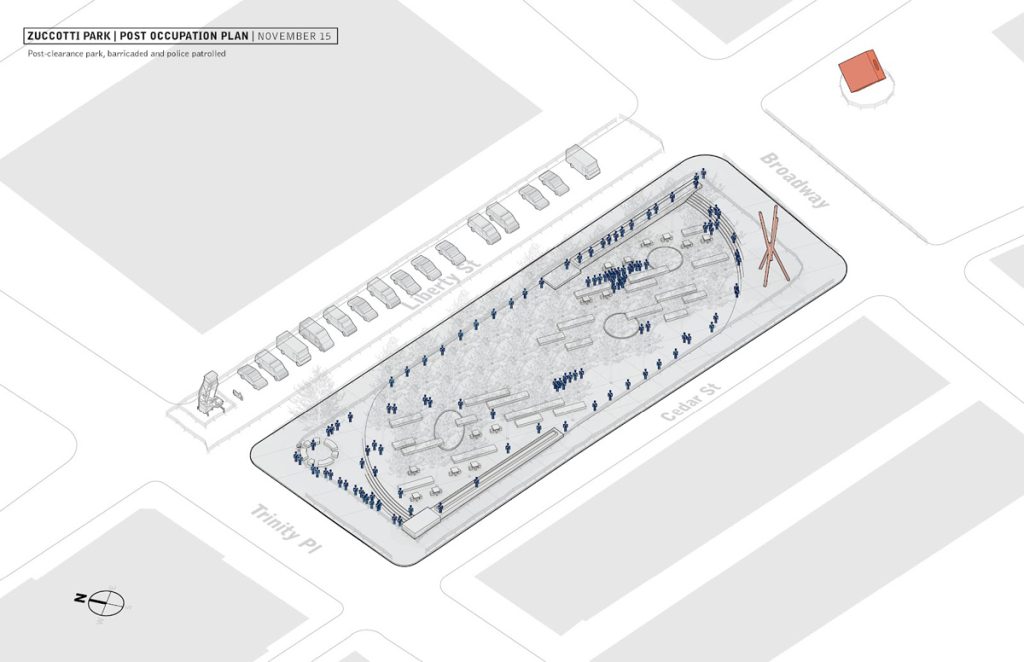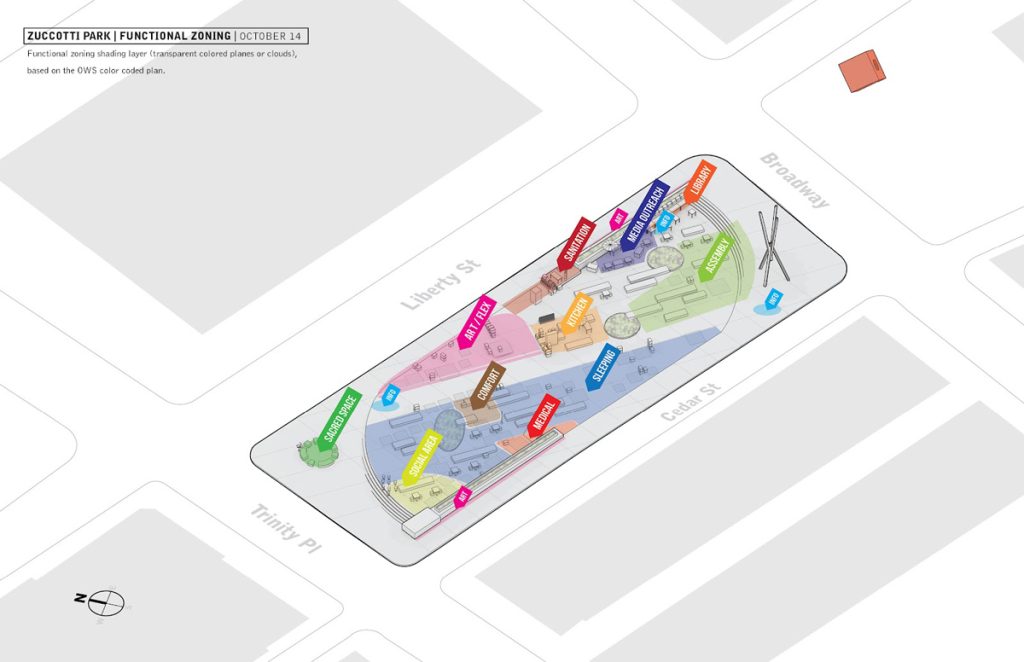Zuccotti Park
the Power of Place in protest
“The city had a policy for encouraging commercial developers to create open space in exchange for more height. But until now, no one has thought about the issue of what the rules are. This has highlighted one of the gaps in New York’s planning system.”
Mitchell L. Moss, a professor of urban policy and planning at New York University, the New York TIMES
Zuccotti and Liberty Plaza Mapped
(1) Zuccotti Park Property lines. (2) Zuccotti Park on September 15, prior to the occupation. Base axonometric, showing layout of park furniture and trees. (3) Water and power overlay. (4) Operations plan, October 14. (5) Tent plan, November 7. (6) Post-Occupation Plan, November 15, after police evicted protesters and barricaded the park. (7) Liberty Plaza functional zoning, October 14.
Jonathan Massey & Brett Snyder, “Mapping Liberty Plaza,” Places Journal.
Zuccotti Park is a “privately owned public space” (POPS), a type of space created through zoning agreements between New York City and private developers. In exchange for permission to build larger structures, developers agree to provide and maintain public spaces that are accessible to everyone.The park, owned by Brookfield Properties but maintained as a public space.
While Zuccotti Park is owned and maintained by Brookfield Properties, it must remain open to the public 24/7 under the terms of this agreement, although the owner can enforce certain rules. This arrangement allows developers to construct more lucrative buildings while offering a public benefit, but it also creates unique dynamics regarding control and access, as seen during the Occupy Wall Street protests when the definition of “public” space was intensely debated.
Harvard Lecture on the Zoning Significance of Zuccotti Park
Occupy Wall Street and Privately Owned Spaces by The Harvard Graduate School of Design
Occupy Wall Street Spokescouncil Community Agreement
Personal Copy, scanned booklet
The synergistic quality of the park during Occupy Wall Street was pivotal in creating a physical space where a plethora of unrelated causes could converge, fueling the movement’s diversity and strength. While the internet’s organizing strategies were crucial for mobilizing and spreading awareness, the park itself became the heart of the movement, transcending the limitations of purely online activism, often criticized for its ineffectiveness and lazy hacktivism.
In this shared physical space, individuals from different backgrounds and interests found common ground, fostering collaboration and solidarity in a way that the digital sphere alone could not achieve. The park was where ideas were exchanged, alliances were formed, and the movement’s momentum was sustained, illustrating the indispensable role of physical presence in effective activism.

